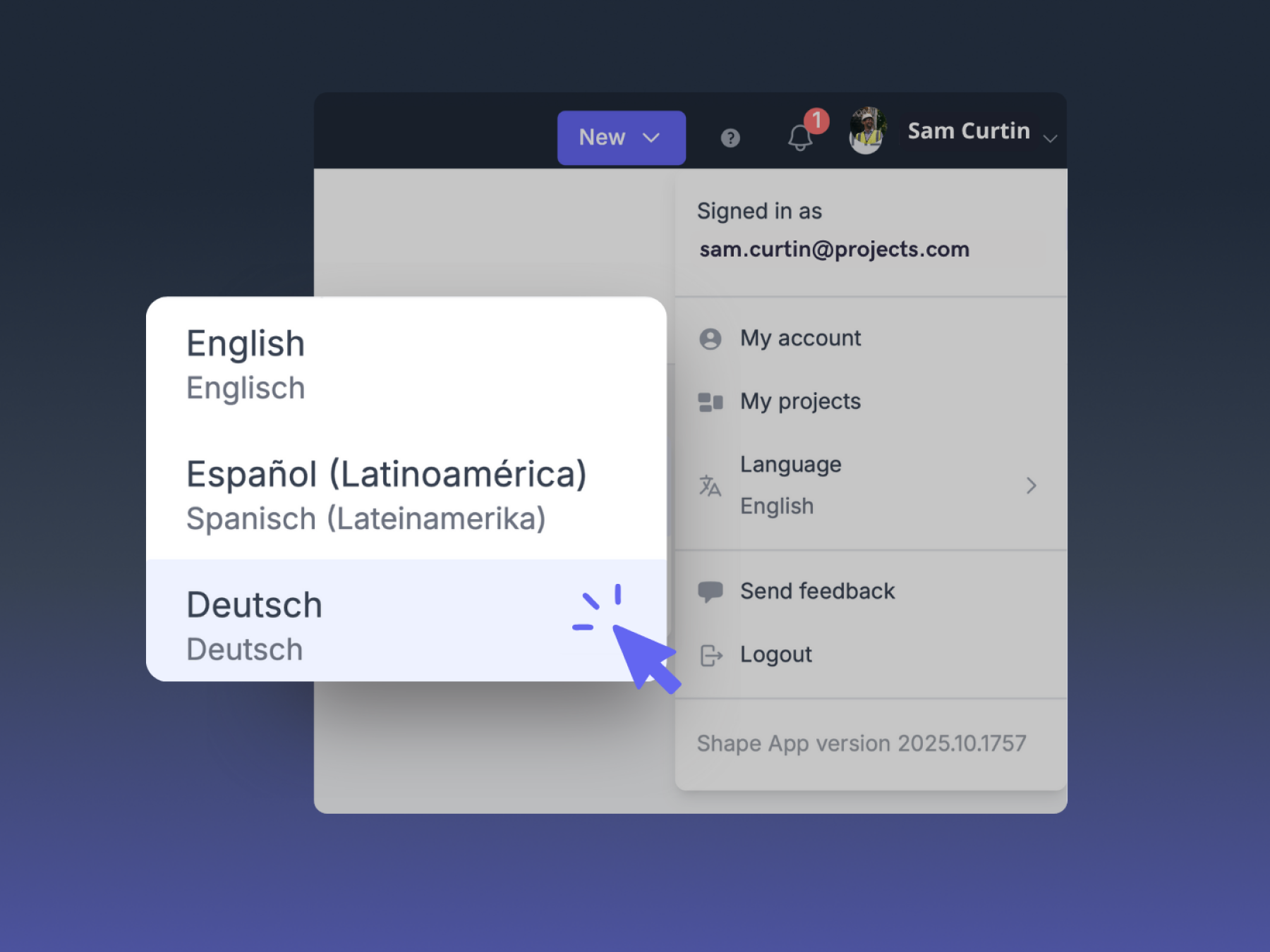Change is a constant on construction sites, yet change management in construction projects routinely falters.
In fact, around 70% of organisational change initiatives fail across industries (McKinsey 2015; Harvard Business Review, 2013), and construction is no exception.
Despite detailed contracts and careful planning, uncontrolled changes and inconsistent processes lead to cost overruns, disputes, and eroded trust on major projects. So, why does construction change management fail so often - and what can project leaders do about it?
This article explores the common pitfalls behind failed change management on-site and shows how modern contractors are now using structured, site-level practices to regain control of change.
The High Stakes of Failed Change Management in Construction
Even minor changes can carry major consequences if mismanaged:
1. Ballooning Costs:
Unmanaged changes lead to rework and budget overruns.FMI Research (2018) estimated U.S. construction rework and inefficiencies cost $177 billion annually (equivalent to ~5% of industry spending), and change orders represent 8-14% of project costs on average (Gordian, 2020).
On some projects, scope creep and poor controls have pushed cost increases beyond 25%.
2. Schedule Delays:
Cascading changes disrupt the project timeline. Without control, a single variation can trigger ripple effects that push milestones out by weeks or months.
3. Disputes and Lost Trust:
Surprise cost or schedule impacts often lead to claims and disputes. Clients lose confidence when they feel changes aren't transparent - and contractors may even lose legal entitlements if notice procedures are ignored. Nothing erodes stakeholder trust faster than unmanaged change.
Effective change management exists to prevent these outcomes, as it controls how variations are identified, evaluated, approved, and documented.
When done right, it acts as a safety net that keeps delivery and commercial objectives aligned. But too often, that net has holes.
.png)
Common Reasons Change Management Fails on Site
Every project is different, but several recurring pitfalls cause change management efforts to fall short in the construction industry.
Understanding these failure modes is the first step to fixing them:
1. Treating Change Management as an Afterthought
Many construction teams only address change management when problems are already unfolding.
Without a plan from the start, changes are handled ad hoc, leading to confusion and conflict. Key steps - like securing stakeholder buy-in or establishing communication protocols - get overlooked, so change efforts fizzle out or veer off track.
Solution: Make change management a front-loaded priority.
Define clear procedures for handling variations before construction begins. Work out how changes will be logged, who must approve them, and how impacts will be documented.
Anticipate common change scenarios (client requests, site surprises) and include contingency measures. With a prepared playbook, the project team isn't improvising under pressure when the unexpected occurs.
2. Poor Communication Across Teams
Many breakdowns in change management are really breakdowns in communication.
Construction teams are often siloed - site engineers, design consultants, and clients might each have bits of information that others don't.
Without a transparent channel to share updates, important change information gets lost or delayed. If a site engineer fails to notify the office of a scope change promptly, decisions will be made on outdated information.
In the worst case, failing to give timely notice can even waive a contractor's rights to relief.
Solution: Establish a "communicate early and often" culture.
Set up clear, immediate channels for reporting changes (e.g. daily coordination calls or a shared digital log for issues). Standardise how and when a change notice should be sent and to whom.
The moment a potential change is spotted, the right people should hear about it. By keeping everyone in the loop, there are no surprises - which means fewer mistakes and disputes.
3. Burdensome Processes and Paperwork
A change management system can fail if it's too bureaucratic.
When submitting a change requires lengthy forms, multi-step approvals, or confusing jargon, busy site teams will find ways to avoid it.
On a fast-paced jobsite, crews won't pause for an overcomplicated process - they'll either ignore it or handle the change informally. The result? Changes occur off the record, and the formal system is bypassed.
Solution: Streamline the process to make it easy to do the right thing.
Use simple change forms (or better yet, digital tools) that let the team log a variation in minutes.
Empower project managers to approve minor changes quickly within set guidelines, instead of forcing every decision through a committee. The easier and faster it is to comply with the change procedure, the less temptation there is to work around it.
4. Inadequate Training and Change Awareness
Another common pitfall is expecting crews to adopt a new tool or process with little to no training.
If people aren't properly shown how to use a new system - or aren't aware why the change is happening - they'll stick to what they know.
In fact, a global survey found that lack of training and support is one of the top obstacles to construction tech adoption. This means teams often abandon new initiatives simply because they don't feel confident or see the benefit.
Solution: Invest in training and onboarding whenever a change is introduced.
Provide hands-on workshops or demos to get everyone comfortable with new software or workflows.
Just as importantly, explain the purpose behind the change - for example, how it will save time, reduce errors, or improve safety. When workers understand both the "how" and the "why," they are far more likely to embrace the change instead of resisting it.
5. Cultural Resistance to Change
Construction is a tradition-heavy industry, so any new way of working can meet quiet pushback.
People on-site often have decades of experience doing things a certain way. It's human nature to prefer the familiar - crews might be sceptical of a new process, especially if they fear it will disrupt productivity or add risk in the short term.
Solution: Tackle the human factor head-on.
Involve the field teams in shaping how the change is implemented - get their feedback and make them part of the solution.
Roll out changes in manageable phases rather than a sudden overhaul, so people have time to adapt.
Importantly, point out early wins: show the crew how the new approach makes their jobs easier or safer. By respecting the existing culture and proving the value of the change, you can turn initial resistance into gradual support.

Best Practices for Successful Construction Change Management
Implementing a few best practices can significantly improve change outcomes on any project:
- Establish Clear Procedures: Define who authorises changes (and ensure management visibly supports the process), how change requests are submitted, and what documentation is required. When everyone knows the playbook, there's less confusion.
- Track Everything: Log every change, even the minor ones. Maintaining a complete, auditable trail of changes protects you if questions or disputes arise later.
- Communicate Transparently: Keep all stakeholders informed about changes and their impacts. Regular updates and open communication ensure that no one is caught off guard by a decision.
- Use the Right Tools: Leverage digital tools or software to streamline how changes are tracked and approved. Automating notifications and record-keeping reduces human error and makes it easier for teams to follow the process.
- Train and Empower the Team: Make sure your staff is well-trained in the change process and the tools involved. Empower site managers to make decisions within guidelines. A confident, informed team will integrate change management into their daily routine rather than see it as a burden.
How Contractors Are Embedding These Practices in Real Projects
Across major projects, contractors are closing the gap between office procedures and site reality by integrating change management directly into their field routines. Rather than treating change control as paperwork, they’ve embedded it into the same systems that capture progress, issues, and daily reports.
This shift means that commercially critical information is captured in real time - not reconstructed weeks later. When a site engineer logs a delay, updates a progress note, or raises an issue, the record is instantly linked to the programme, complete with timestamps and photos.
Many contractors now achieve this integration using connected field systems like Shape Construction, which sit at the site level - complementing, not replacing, enterprise tools such as Procore or Autodesk.
.png)
They provide the structured delivery layer that connects daily and weekly activity with formal change control, ensuring no event or variation slips through the cracks.
In practice, this approach works because change management is no longer an extra process - it’s part of how work gets recorded and reviewed.
- When an engineer notes downtime or a scope adjustment in their daily record, Shape automatically links that event to the relevant activities and locations, creating a clear audit trail.
- Weekly plans and updates show whether changes have been incorporated or still require notice, giving project managers and commercial leads early visibility of potential impacts.
- At management level, aggregated dashboards highlight emerging risks and delays, so leadership can act before they escalate.
The result is a disciplined, evidence-based culture where change is documented as it happens, not debated after the fact.
Contractors using this model report smoother collaboration, fewer disputes, and faster agreement on variations because everyone - from site teams to clients - can see the same structured record of events.
By embedding recognised change management principles directly into daily reporting routines, systems like Shape help projects align delivery, communication, and commercial control without adding administrative burden.
It’s a quiet but fundamental change: the process of managing change is no longer separate from doing the work - it’s built into it.
Conclusion
Construction change management often fails when it's treated as optional or left to chance. It doesn't have to be this way.
By planning ahead, communicating clearly, and supporting your teams through change, even the most complex projects can handle changes without losing control.
In an industry where effective change management can be the difference between a profitable project and a problematic one, it pays to turn this practice into a strength.
👉 For organisations looking to improve how they manage project changes, expert guidance and the right tools make all the difference.
Speak to an advisor to see how your team can better control change and consistently deliver projects on time and on budget.
Frequently Asked Questions
Construction change management refers to the structured process of controlling changes to a project’s scope, design, timeline, or budget once construction is underway. The goal is to ensure changes are evaluated, approved, and documented transparently. Tools like Shape's Data Room and Change Tracker centralise these commercial-impacting events, linking them to daily diaries, issues, and programme impacts. This creates a single, auditable source of truth - so nothing slips through the cracks.
Failure usually stems from poor planning, fragmented communication, and resistance to new processes. Site teams often bypass clunky paperwork, meaning changes go unrecorded. Shape counters this by making change capture part of existing routines: engineers log updates in Shift Manager, issues in Issue Tracker, and weekly adjustments in the Weekly Work Planner. Because records are captured in real time and in tools the field already uses, the process is followed consistently - not ignored.
The keys are clarity, speed, and accountability. Shape makes this practical by: Enabling field-first reporting through Shift Manager and Issue Tracker. Aligning site delivery with programme targets in the Weekly Work Planner. Surfacing early warnings and variances in the Control Room, so teams act before issues escalate. This integration means leadership gets structured data and site teams aren’t burdened with extra admin. The result: faster notice, better records, and fewer disputes.
Shape provides an integrated platform for full performance management. Changes are captured automatically as part of daily and weekly delivery - with photos, notes, and allocations tied to the record. The Changes Tracker consolidates all signals (delays, issues, blocked activities) and tracks them through to resolution, building bulletproof commercial evidence. By joining field updates to commercial oversight, Shape ensures early-stage risks are documented, claims are defensible, and projects stay on track.

.png)








%201.png)


